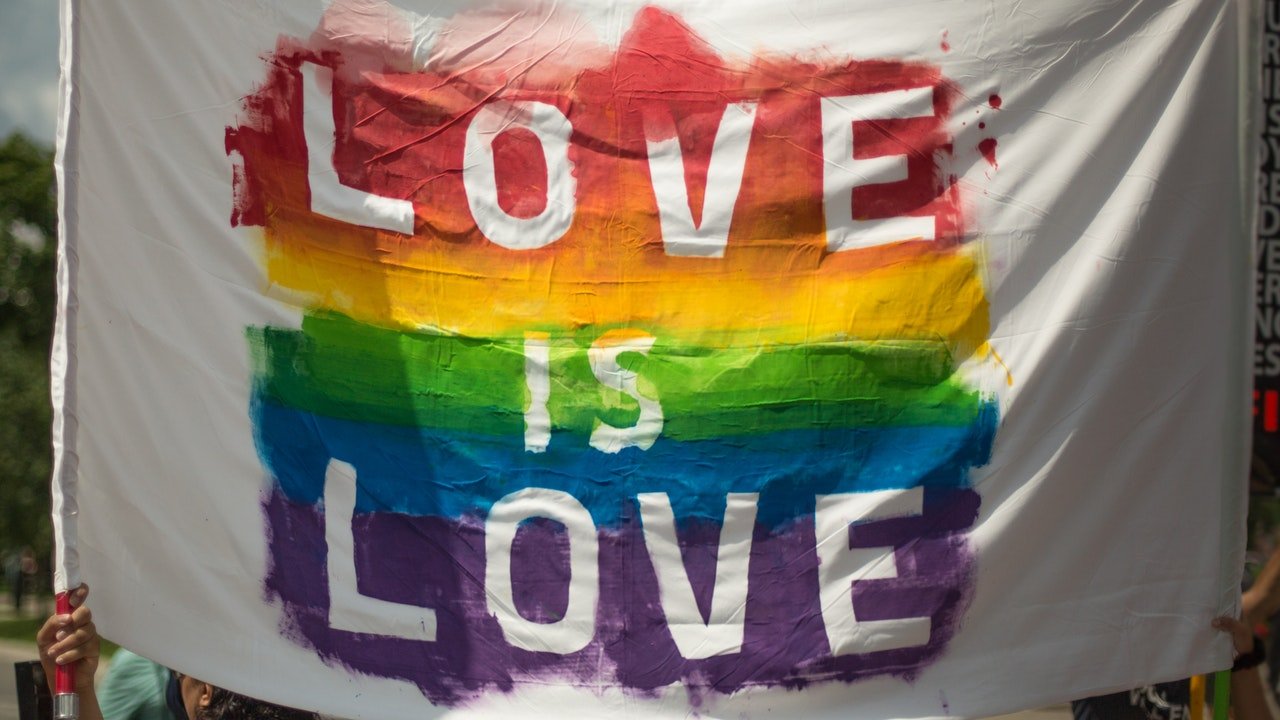Drinks an ungodly amount of coffee and eats an ungodly…

It’s Pride Month!
Prepare for an onslaught of rainbows and the acronym “LGBTQIA+”all over your social media feeds. Icons as they are, however, the rainbow flag and the acronym can get confusing.
Did you know that each color stripe of the rainbow flag represents an aspect of the LGBTQIA+ life? I didn’t, when I first attended a Pride March in college. Neither did I understand who each letter of the acronym represents.
But that’s OK.
As Asia Kate Dillon—who plays Taylor Mason, a non-binary character in the TV show “Billions”—puts it, “we are all ignorant of what we’re ignorant of until we’re not anymore.”
So let’s explore the LGBTQIA+.
The Genderbread Person
Before we delve into the representation of each acronym, it’s important to make a distinction between sex, gender identity, and sexual orientation. This is because the acronym covers all three.
To make the topic more digestible, let’s refer to the Genderbread Person.

Sex: What’s Between Your Legs
Also known as your biological sex, your sex relates to your chromosomes, genitals, or hormones. Think of it as the label the doctor assigned to you at birth. The biological sex spectrum runs from:
- Male – you were born with a male reproductive organ
- Intersex – your sexual anatomy doesn’t fit the typical definitions of female or male
- Female – you were born with a female reproductive organ
Take a look at this spectrum illustrated by The Trevor Project, an organization that provides suicide prevention services to the LGBTQIA+ community:

My sex, for example, is female, as I was born with female reproductive organs.
Gender Identity: Who You Think You Are

Image from IMDB
Your gender identity is your sense of self. It’s who you know yourself to be; it’s how you see yourself.
ARC International, a Canada-based organization that advocates LGBT rights, defines gender identity as “a person’s deeply felt internal and individual experience of gender.” It may or may not correspond to the sex you’ve been assigned at birth.
The gender identity spectrum runs from man to genderfluid to trans to woman. See The Trevor Project’s gender identity spectrum:

- Cisgender: This refers to the two far ends of the spectrum: man and woman. These are people whose gender identity corresponds to their biological sex. For instance, you’re a cisgender male if you were born a male and identify as a man. You are a cisgender female if you were born a female and identify as a woman.This is what I answer when we talk about gender in the office. I’m a cisgender female, but I’m not straight. More on that later.
- Transgender – This falls somewhere between the two ends. Transgender individuals are people whose gender identity differs from their biological sex. For instance, a transman is a person who was assigned female at birth, but believes this is incorrect, because he feels that he is a man.It is important to note that a transgender identity is not dependent on medical procedures. So long as their biological sex isn’t aligned with their gender identity, they call themselves transgender.
Now this is where it gets a little complicated—but people are inherently complicated, so it only makes sense that gender identities are, as well.
There are people who subscribe to the idea that there are only two, opposite, and discrete genders: man and woman. You’re either one or another. Cisgender and transgender people can have a gender identity that falls within these two categories. After all, they check if their gender identity (man vs woman) corresponds to their sex (male vs female).
Then, there are people who believe that gender identities aren’t solely man and woman. Hence, they view gender as a non-binary concept. Apart from cis and trans people, people who subscribe to this notion identify as:
- Non-Binary – An umbrella term for gender identities that are not exclusively man or woman. Non-binary people may feel that they 1) have more than one gender; 2) don’t identify with a single gender; or 3) are something else altogether.They often adopt the pronoun “they,” even if they refer to a singular, non-binary person.
- Genderqueer –This is also an umbrella term for people who don’t identify with conventional gender identities. They don’t see themselves belonging to a socially accepted binary category. For some, genderqueer is a non-binary identification; for others, it is not. They may exhibit both traditionally masculine and feminine qualities, or neither.
- Gender Fluid – A person whose gender identity is not fixed; instead, it shifts over time or changes depending on the situation.
Yes, some people identify as a woman at one point in their life, then shift to identifying as a man in another. After all, gender (unlike sex) is fluid.
Sexual Orientation: Who You Date

Then there’s the question of who you’re attracted to, and this is called your sexual orientation or attraction. It’s who you date, who you crush on, who you’d love to approach in an LGBTQIA+ bar. This may or may not depend on your gender identity.
These may fall in different categories:
- Heterosexuals – The straight people (men attracted to women, women attracted to men).
- Homosexuals – The people attracted to the same gender (men to men, women to women).
- Bisexuals– Attracted to both men and women.
- Pansexuals – Attracted to individuals of all gender identities and sexes. There’s a huge conversation about the overlap between bisexual and pansexual, but that’s for another article.
- Asexuals – Attracted to no one. At all.
Let’s Explore the Acronym

It took us a while, but now that we’ve covered the basics, let’s discuss each letter of the LGBTQIA+, which is a combination of sexual orientations and gender identities.
The first three refer to sexual orientations:
- Lesbian–A woman whose enduring emotional, physical, sexual, and romantic attraction is to other women.
- Gay – A man whose enduring emotional, physical, sexual, and romantic attraction is to other men. In modern usage, lesbians can refer to themselves as “gay,” but in a strict sense, this term covers men solely.
A note: gays and lesbians are usually cisgender people. A lesbian can be a person who was born with lady parts, identifies as a woman, and is attracted to other women. Someone gay can be a person who was born with male parts, identifies as a man, and is attracted to other men.
- Bisexual– A man or a woman whose enduring emotional, physical, sexual, and romantic attraction is to both men and women. Yes, they exist. In fact, the writer of this post is one; a cisgender female who is attracted to women . . . and men.
Then comes a gender identity:
- Transgender– As mentioned earlier, these are people whose identity differs from the sex assigned at birth.
Followed by the unsure:
- Questioning –People who are unsure of both their sexual orientation and/or gender identity. Yes, you belong to us, too!
Followed by a biological sex:
- Intersex–Unlike the previous items, being intersex refers to your biological sex, unrelated to how you feel or how you see yourself. As mentioned earlier, these are people whose genetic features are neither wholly female nor male. There are over a dozen known intersex conditions.
Regardless of your gender identity, there’s a place for you in the community.
Then back to a sexual orientation:
- Asexual – Affectionately called the “ace,” these individuals who don’t feel any sexual attraction to others, nor do they have a desire for partnered sexuality. Like lesbians, gays, and bi’s, this refers to a sexual orientation.
And everybody else:
- The + –This refers to everything on the gender and sexuality spectrum that we can’t describe yet. This includes:
- Pansexuals
- Non-Binary People
- Genderfluid Indiviuals
A few years from now, the LGBTQIA+ might expand to include more gender identities and sexual orientations. We’re becoming more inclusive by the day and more accepting of attractions that deviate from social conventions.
Trust that, as the community grows, so will the acronym, queer media, and the conversation — and we’ll be happy to be part of that growth.
Happy Pride!
What's Your Reaction?
Drinks an ungodly amount of coffee and eats an ungodly amount of chocolate. Up at an ungodly hour.


